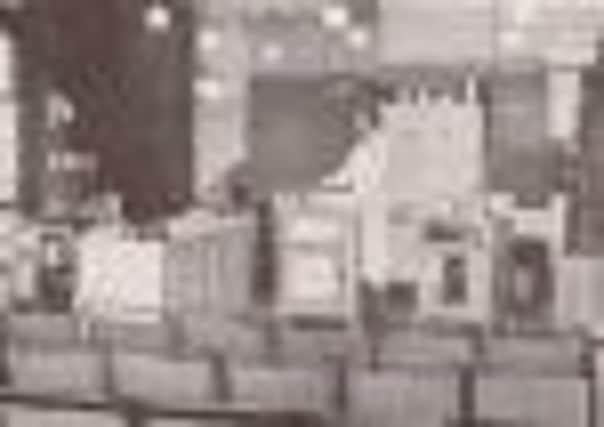ROGER FROST: Bringing business into Burnley in the 1930s


This thought came to mind on re-reading a book published by Burnley Corporation in 1935. The book is entitled “Burnley Means Business” and is sub-titled “Burnley and its Industrial Facilities”.
Splendidly produced with some excellent photos and an informative colour map of the county borough as it then existed, it is as well to remind you of what problems were facing the town in those days.
Advertisement
Hide AdAdvertisement
Hide AdThe Depression of the inter-war years was becoming particularly marked as Burnley’s old industries were clearly in considerable decline. The book lists 23 industrial buildings, mainly cotton mills but including a former brewery, a dye works and a warehouse, which were all vacant and available to be developed.


The buildings included Lowerhouse Mills which had been operated by the Dugdale family until (I think) 1929.
After that, Lancashire Cotton Corporation ran the business for a few years but, by 1935, all the machinery in the mill had been removed, as had its power plant. The same can be said of the machinery at Healey Royd Mill, near the canal at Finsley Gate; of Rishton Mill in Gunsmith Lane and of Stoneyholme Shed in Grosvenor Street though, in these mills, a little of the machinery survived intact.
At the back of the book the town clerk, Colin Campbell, makes it clear the council was interested in economic development and invited investors to Burnley to see what the town offered to potential employers. The Mayor, Coun. J.E. Heap, acknowledges what he calls “the storm of international trade dislocation” but he “invites those who contemplate the founding of a new industry, or the opening of a branch factory...to examine the facilities within the borough”.
Advertisement
Hide AdAdvertisement
Hide AdNeither of them make reference to the great experiment being carried on at the time in Burnley. The corporation, very much against the wishes of the Government who threatened Burnley councillors with legal action if they continued, was preparing to build a large modern factory near the centre of the town. It was its intention to lease it to a firm which would employ hundreds of local workers who had formerly found work in the declining cotton, textile engineering and mining industries which had been the mainstays of the Burnley economy for years.
This factory, on the site of Thursby Gardens in Colne Road, was opened in 1937 and was occupied by the American firm of Platers & Stampers (later the Prestige Group). They were makers of kitchenware and, in time, Burnley acquired a whole new industry and the nick-name “Little Sheffield”.
It could be that Platers & Stampers were the first foreign firm to set up in Burnley, certainly on a large scale. They came because of the forward-thinking council but what else might have attracted them?
The book goes some of the way to answer the question as it details the facilities and services which an incoming employer would expect to find in Burnley. Listed first of these is the town’s electricity supply industry which had been founded by Burnley Corporation in 1893 and, though Burnley was connected to the National Grid at two points (in Padiham and Accrington), the generating station was still in their hands in 1935. In fact, it was not until after the Second World War Burnley ceased to generate its own electricity.
Advertisement
Hide AdAdvertisement
Hide AdThe generating station was in Aqueduct Street, close to where the present Tesco store now stands. I have said, for some time, that when the opportunity presented itself, I would write about Burnley’s electricity supply industry. The problem has been that I have not had my own photos of the interior of the building, one which shows some of the machinery housed there. On page 19 of “Burnley Means Business” the photos I reproduce for you today can be found. The first is a picture of the interior of the corporation’s Electricity Generating Station. It shows only a small part of the generating floor but you can see what a magnificent place it was. A friend of mine, who worked there, says the building was something of a “Cathedral to Engineering”.
The other picture is of the demonstration kitchen at the Corporation Electricity Showrooms which was at 79 St James’s Street, Burnley. It might seem odd there was a demonstration kitchen but it must be remembered that Burnley ladies were used to cooking on gas stoves or even coal or wood-fired kitchen ranges. Electricity was new and very different to other forms of energy – both gas and coal had naked flames whereas electric cookers had “mysterious” hot plates.
The town also made its own gas, supplied its own water and owned, with the boroughs of Nelson and Colne, its own transport undertaking. The book details all this and gives information about the industries already making use of these facilities. I will make use of other illustrations in future articles but this one reminds us of the days when the town was proud to produce its own electricity.